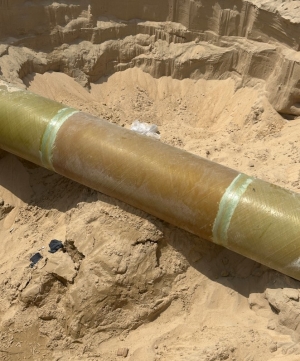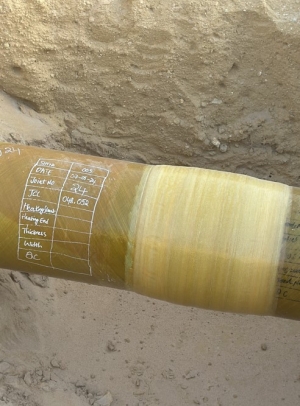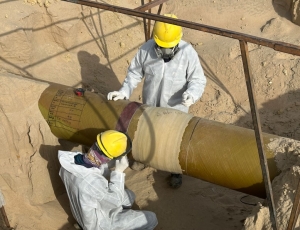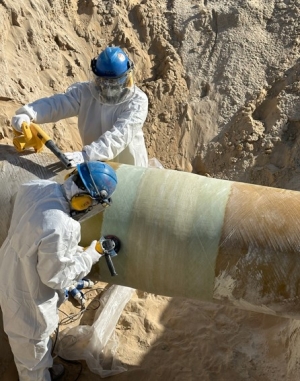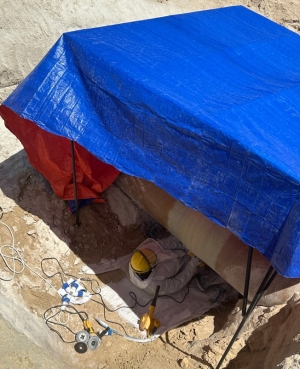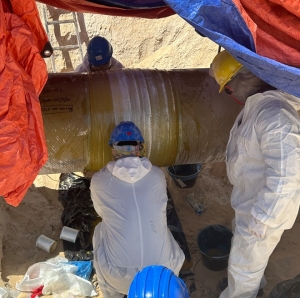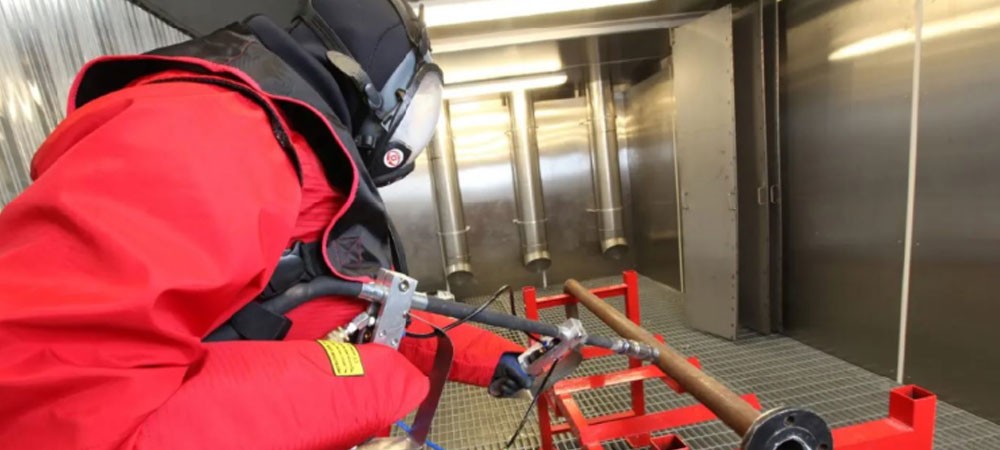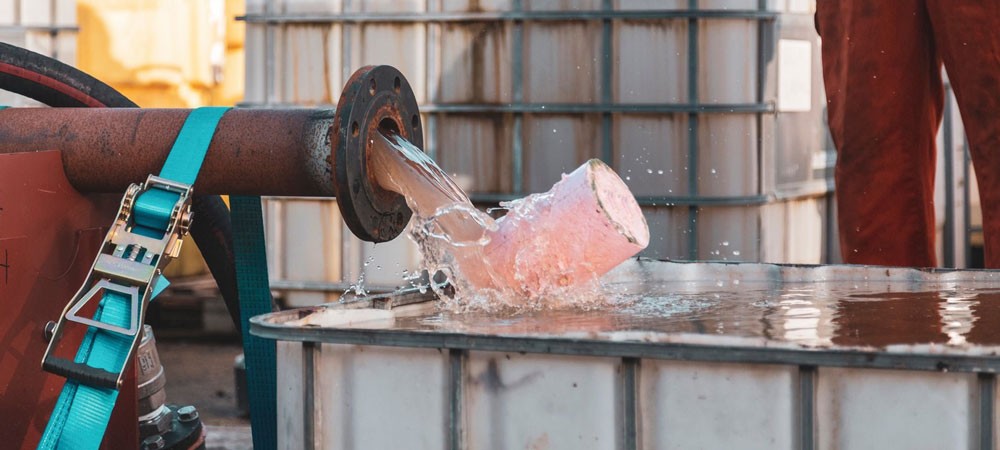Non-Metallic Pipeline Services
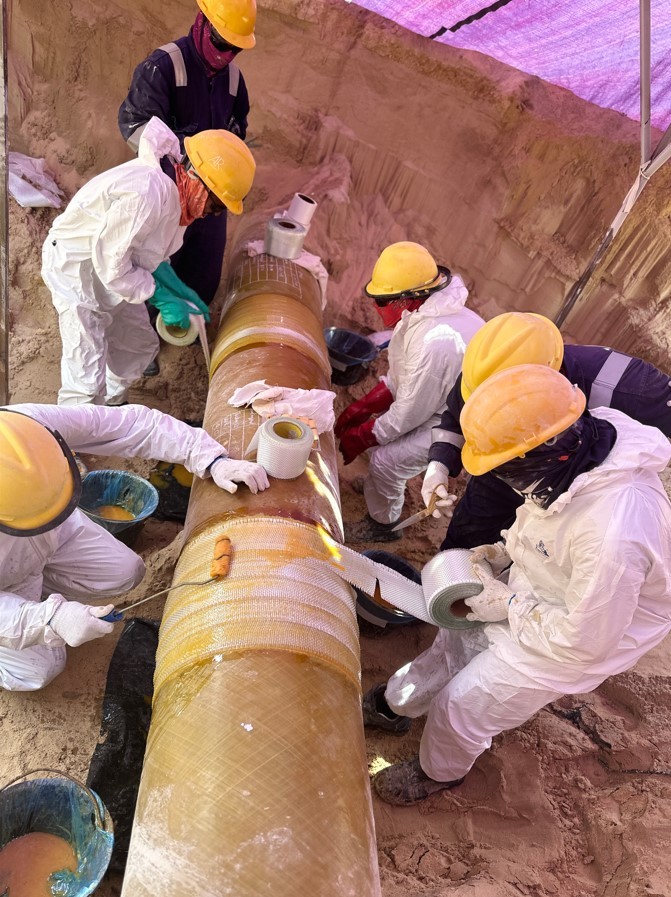
Non-Metallic Pipeline Services
We are one of the leading Non-Metallic piping, and fabrication service providers in Saudi Arabia with a range of facilities under one roof. We are a one-stop shop service provider to offers a full range of plastic piping fabrication, joining and installation capabilities spanning most non-metallic pipe services such as GRP, GRE, UPVC, PP, PE, HDPF, PVDF & RTR pipes.
EMBARK has piping distribution solutions suitable for:
- High-end water.
- Chemical collection and distribution.
- Chemical waste.
- Double containment piping systems.
- Process waste.
- Wastewater treatment.
Although metallic piping is widely used today, nonmetallic piping has its own importance, in addition to traditional materials, mankind now has new combinations of nonmetallic piping materials to choose from.
In this article, you will learn about common nonmetallic piping materials, both old and new. You will also learn about their application.
When concrete piping is to be subjected to a heavy load or pressure, it is reinforced or strengthened by steel rods. Whereas the first step in making a prestressed concrete pipe is to line a welded steel cylinder with concrete. When the lining has been set, the cylinder is tightly wrapped with high-strength wire. The steel cylinder, in turn, squeezes the concrete lining, placing it under compression. The outside of the pipe is concrete coated. The pipe has greater strength because the concrete has been compressed. This pipe can carry fluids with pressures of up to 600 psi (depending on the material specification). For moving the fluid, pumps are commonly used in reinforced and prestressed concrete piping systems. Either a lead-and-steel or a rubber-and-steel joint is used to join such pipes. This is a more advanced form of the bell-and-spigot joint.
NON-METALLIC PIPELINE FABRICATION & INSTALLATION SERVICES
Within the family of non-metallic pipes, there are different types used in the industry: GRP (Reinforced Fiberglass), PVC, PP (Polypropylene), and HDPE (High-Density Polyethylene) among others. This type of system is usually used in industrial plants in general, petrochemical plants, water treatment plants, seawater desalination plants, and in power generation plants.
One of the most used non-metallic piping systems is GRP, due to its superior mechanical resistance, lightness (better weight/resistance ratio than steel), and for its outstanding corrosion resistance. Therefore, this article focuses on GRP (Glass-reinforced Glass) piping systems.
- GRP pipes
These pipes are made up of two elements, a matrix and an element that provides mechanical resistance. The matrix is usually some type of synthetic resin that is selected based on its chemical resistance and its allowable working temperature. The fibers are responsible for providing mechanical properties, usually fiberglass. For this reason, these pipes are also known as composite pipes. Depending on how the fibers are arranged, the pipe will have different mechanical properties.
- Codes & standards
The standards used in this type of piping system had evolved over time. At the very beginning, the BS 7159 and OKOOA standards were the pioneers, with the ISO 14692 standard being the current application of reference for most industrial facilities.
The ISO 14692 standard covers the entire spectrum necessary to regulate the GRP application. It is formed into four sections, covering the main characteristics of GRP pipes, their quality control and tests, the design of the pipe and fittings, and finally the manufacturing method, assembly, and operation of the pipes.
- Analysis of flexibility and stress under standard ISO 14692
To perform the analysis of a GRP piping system it is necessary to consider and define certain properties of the material. To accomplish this, it is of vital importance that the selected manufacturer provides all the parameters and properties based on the conditions to which the pipe will be exposed. These conditions are pressure, temperature, diameters, and thicknesses, among others, and will be determined by the characteristics and needs of each project.
Although it is true that the current trend is to standardize all these parameters, the truth is that they depend on the method used by each manufacturer, so if the characteristics adopted at the beginning of the project do not coincide with the chosen supplier, the analysis carried will not correspond to reality.
A characteristic of this type of system is that the thicknesses of the fittings (elbows, tees, etc.) are greater than the thicknesses of the pipe sections.
Below are two typical tables where you can view all the parameters necessary to enter data in the calculation program.
- Mechanical and physical properties of GRP materials
The materials that make up the GRP pipes are of the orthotropic type, unlike steel which is of the isotropic type. The mechanical properties in a specific direction throughout the material (Axial for instance) are all the same, and the properties in all directions perpendicular to the first will also be the same (Hoop), but different from the previous ones. This difference in mechanical properties leads to having two moduli of elasticity for the same material, Ea. (Axial modulus) and Eh (Hoop modulus).
The values of the modulus of elasticity of GRP are low compared to that of steel, which means that the material will have a greater deformation under the same stress if we compare it with steel. Some typical values are around 10,000 MPA for Ea.
Due to this characteristic of GRP, pipes will deform more than steel. This is very important in the flexibility analysis, especially when it comes to the stiffness of the pipe supports. This will avoid, if the layout is flexible enough, overstressed points and the loads obtained in the supports will be lower values, being the design of the support is less robust and more economical.
The density of the pipe is a very important property to consider since the weight of the pipe will be calculated with this value, and therefore it will be reflected in the stress calculation.
Another physical property but not as important as the density of the material is the coefficient of thermal expansion of the material with which the pipe is to be manufactured.
